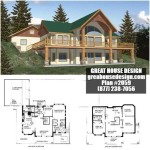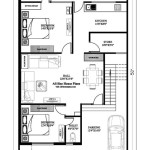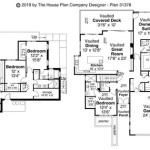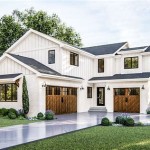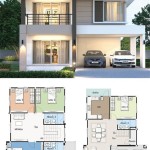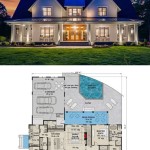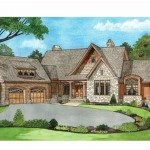Exploring the Elegance of Southern Colonial Style House Plans
Southern Colonial architecture evokes a sense of timeless grace and grandeur, reflecting a rich history and a deep appreciation for classical design principles. These homes, characterized by their symmetrical façades, imposing columns, and expansive porches, offer a distinctive and enduring aesthetic. Understanding the nuances of Southern Colonial style house plans requires examining their historical roots, architectural elements, and modern adaptations.
The Southern Colonial style evolved from earlier Colonial architectural trends, drawing heavily from Georgian and Federal influences. The climate of the American South also played a significant role in shaping the style, favoring designs that prioritized ventilation and shade. The large porches and high ceilings, for example, were specifically designed to mitigate the effects of the region's hot and humid summers.
Today, Southern Colonial house plans continue to be a popular choice for homeowners seeking a sophisticated and stately residence. While adhering to traditional design principles, modern interpretations often incorporate contemporary amenities and building materials, resulting in homes that are both elegant and functional.
Key Characteristics of Southern Colonial Architecture
Several defining features distinguish Southern Colonial architecture from other house styles. These elements contribute to the overall aesthetic and functionality of the home, creating a unique and recognizable architectural statement.
A defining characteristic of the Southern Colonial style is its emphasis on symmetry. The façade is typically symmetrical, with a centrally located entrance flanked by evenly spaced windows. This symmetrical design creates a sense of balance and order, contributing to the overall feeling of formality and elegance. The central entrance is often emphasized by a prominent portico or pediment, further enhancing the symmetry of the design.
Another key feature is the presence of large, prominent columns. These columns, typically Doric, Ionic, or Corinthian in style, are a hallmark of Southern Colonial architecture. They not only provide structural support for the roof but also add to the visual grandeur of the home. The columns often extend the full height of the house, creating a dramatic and imposing effect. The number of columns can vary, but they are always arranged symmetrically to maintain the balance of the façade.
The expansive front porch is another essential element. These porches, often wrapping around the entire front of the house, provide ample space for outdoor living and relaxation. They are typically shaded by the roof and provide a comfortable space to enjoy the outdoors, even in hot weather. The porches also serve as a transitional space between the interior and exterior of the home, blurring the lines between indoor and outdoor living.
Large windows are also common in Southern Colonial homes, allowing for ample natural light to enter the interior. These windows are typically double-hung and are often adorned with shutters, which provide both aesthetic appeal and practical functionality. The shutters can be closed to provide privacy and to protect the interior from the elements. The windows are usually arranged symmetrically to complement the overall design of the house.
High ceilings, often exceeding nine feet in height, are another characteristic of Southern Colonial homes. These high ceilings create a sense of spaciousness and airiness, helping to keep the interior cool during the summer months. They also allow for the incorporation of decorative elements, such as chandeliers and elaborate crown molding, which further enhance the elegance of the interior.
Exploring Different Interior Layouts in Southern Colonial Homes
The interior layout of a Southern Colonial home typically reflects the formality and elegance of the exterior. Common features include grand entryways, formal living and dining rooms, and spacious bedrooms. However, modern interpretations often incorporate more open-concept layouts to accommodate contemporary lifestyles.
The grand entryway is often a focal point of the home, featuring a sweeping staircase and a spacious foyer. This entryway serves as a welcoming space for guests and provides a sense of arrival. The staircase is often ornately decorated, with detailed balusters and handrails. The foyer may also feature decorative elements, such as a chandelier, a console table, and artwork.
Formal living and dining rooms are typically located off the entryway, providing spaces for entertaining guests and hosting formal occasions. These rooms are often decorated with elegant furniture, fine art, and decorative accessories. The living room may feature a fireplace as a focal point, while the dining room may have a large dining table and chairs to accommodate large gatherings.
The kitchen is often located at the rear of the house and may be connected to a less formal family room or breakfast nook. This layout allows for a separation between the formal entertaining spaces and the more casual living areas. The kitchen is typically equipped with modern appliances and ample counter space for food preparation. The family room provides a comfortable space for relaxing and spending time with family.
Bedrooms are typically located on the upper floors of the house, providing privacy and separation from the living areas. The master suite is often a spacious retreat, featuring a large bedroom, a walk-in closet, and a luxurious bathroom. The other bedrooms may share a bathroom or have their own private bathrooms. The bedrooms are typically decorated with comfortable furniture and calming colors to create a relaxing atmosphere.
Modern Southern Colonial house plans may incorporate open-concept layouts, which combine the living room, dining room, and kitchen into one large, open space. This layout promotes a more casual and social atmosphere, allowing for easy interaction between family members and guests. The open-concept layout also allows for more natural light to enter the interior, creating a brighter and more inviting space.
Modern Adaptations and Variations of Southern Colonial Design
While maintaining the core principles of symmetry, columns, and porches, contemporary Southern Colonial house plans often incorporate modern building materials, energy-efficient designs, and customized features to meet the specific needs of homeowners.
Modern building materials, such as composite siding, energy-efficient windows, and insulated roofing, are often used in contemporary Southern Colonial homes. These materials provide durability, low maintenance, and energy efficiency, reducing the overall cost of ownership. Composite siding is a popular choice because it mimics the look of wood siding but is more resistant to rot, insects, and weathering. Energy-efficient windows help to reduce heat loss in the winter and heat gain in the summer, lowering energy bills. Insulated roofing helps to maintain a consistent temperature inside the home, further improving energy efficiency.
Energy-efficient designs, such as solar panels, geothermal heating and cooling systems, and rainwater harvesting systems, are also becoming increasingly popular in Southern Colonial homes. These designs help to reduce the home's environmental impact and lower utility bills. Solar panels generate electricity from the sun, reducing the reliance on fossil fuels. Geothermal heating and cooling systems use the earth's natural temperature to heat and cool the home, providing a more efficient and sustainable alternative to traditional HVAC systems. Rainwater harvesting systems collect rainwater for irrigation and other non-potable uses, conserving water and reducing water bills.
Customized features, such as gourmet kitchens, home theaters, and outdoor living spaces, are often incorporated into modern Southern Colonial homes to meet the specific needs and preferences of homeowners. Gourmet kitchens are equipped with high-end appliances, custom cabinetry, and ample counter space, making them ideal for cooking and entertaining. Home theaters provide a dedicated space for watching movies and enjoying entertainment. Outdoor living spaces, such as patios, decks, and outdoor kitchens, extend the living space outdoors, providing a comfortable and inviting space for relaxing and entertaining.
Variations on the Southern Colonial style may include elements of other architectural styles, such as French Country or Craftsman, to create a unique and personalized design. These variations allow homeowners to express their individual style while still maintaining the core principles of Southern Colonial architecture. For example, a Southern Colonial home with French Country influences may feature a more rustic exterior, with stone accents and a more informal garden. A Southern Colonial home with Craftsman influences may feature exposed rafters, a front porch with tapered columns, and a more natural color palette.
The adaptability of Southern Colonial house plans ensures their continued relevance in contemporary architecture. By blending traditional elegance with modern conveniences and sustainable design principles, these homes offer a timeless appeal that resonates with homeowners seeking a sophisticated and comfortable living environment.

Southern Colonial House Plans Monster

Southern Colonial Home Plan 32444wp Architectural Designs House Plans

Southern Colonial 6990 3 Bedrooms And 2 5 Baths The House Designers

Three Story House Plans 5 Bedroom Colonial Style Home

052h 0073 Southern Colonial Home Plan House Plans Greek Revival

House Plan 75501 Southern Style With 1698 Sq Ft 3 Bed 2 Bath

4 Bedrm 3270 Sq Ft Southern Colonial House Plan 178 1034

3 Bedroom 2 Story Southern Colonial House Plan With Study And Wrap Around Porch Charleston Plans Farmhouse Family

Plan 042h 0021 The House

House Plan 68173 Southern Style With 2758 Sq Ft 3 Bed 2 Bath

